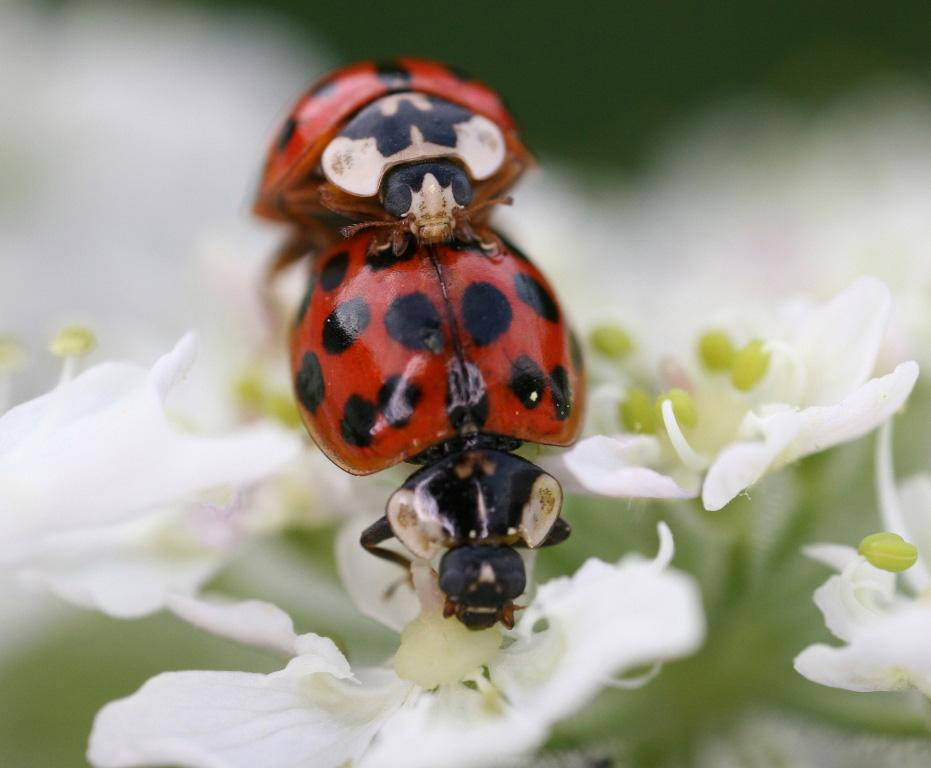The Ladybird Killers
UK Ladybirds are being eaten by their invading cannibal cousins who. Can we stop the march of the harlequin? Liam Creedon reports
All is not well in ladybird land. Everyone’s favourite insect is in dire trouble after finding itself on the menu of a terrifying foreign cousin that has embarked on an unstoppable rampage across the UK.
The harlequin ladybird, which first appeared here in an Essex pub beer garden in 2004, is the world’s fastest-spreading invasive insect. It spreads at a rate of 200km per year and it’s feared that it may already be too late to stop the beetle bombarding UK gardens.
At first, experts believed that the bigger, more aggressive interloper from East Asia might compete with the smaller UK ladybird species for food and habitat.
But a ground-breaking new study has revealed that the problem is even worse than first feared; not only is the harlequin out-competing its British counterparts, but it’s gobbling them up for dinner.
It had been thought that they fed mainly on the eternal foe of gardeners worldwide – the aphid. But ladybird scientists from Anglia Ruskin University were in for a nasty shock when they examined the DNA taken from the guts of harlequin larvae; yes, they’d been eating copious amounts of aphids, but they’d also been munching on other species of ladybird and hoverflies.
These results have set alarms bells ringing, as their arrival has coincided with a downturn in a number of our ladybird species. The fear is that direct predation by the harlequins could cause a potentially devastating slump in British ladybird populations.
Dr Peter Brown from Anglia Ruskin University, who led the research, explains: “This study shows that harlequin ladybirds in the wild commonly prey on a number of insects other than just aphids. The results offer further evidence that the Harlequin is a generalist predator which is having a damaging effect on native species across Europe.”
Why should we care if ladybirds are in trouble? Well, they’re an important part of our ecosystems and play a key role as mini pest controllers – not to mention they’re something of a national bug treasure.
The UK has 47 species of ladybird, around 28 of these are the familiar, brightly coloured spotted variety – and we’ve been quietly besotted with them from time immemorial. They have cropped up in nursery rhymes, on television adverts and given their name to a series of children’s books. Our obsession dates back to the cult of the Virgin Mary in the Middle Ages; the bugs’ bright red livery mirroring the symbolic reds of religious art. Ladybirds have been seen as a good luck charm ever since.
The friendly image we have cultivated of the ladybird is actually at odds with reality for these beetles are ferocious predators. But we have an enduring affection for ladybirds that makes their indiscretions easy to forget. That was, at least, until the arrival of the harlequin which has quickly shot up the charts to become one of our most hated insects.
The seven-spot ladybird is the species we are most familiar with, but the two-spot is also common and the yellow 22-spot can be found without too much trouble. But the harlequin, as its name implies, is a master of disguise and can appear in a myriad of different colour and spot variations. They are often found around window sills in autumn as they gather en masse to seek out hibernation spots.
The two-spot is the ladybird at greatest risk. Ladybird ecologist Dr Helen Roy explains: “We recently published research highlighting the threat posed by the harlequin to other species of ladybird and demonstrated that seven of eight species that we assessed showed significant declines.
“The two-spot is most at threat because it overlaps very closely with the harlequin both in habitat and feeding preferences. It is also a smaller ladybird and does not have such strong chemical defences as the harlequin.”
Dr Roy works on the UK Ladybird Survey which was set up to record the distribution of ladybirds, help the public identify species and attempt to address the problems posed by the Harlequin.
She says: “We have been studying the natural enemies of ladybirds that occur in the UK to see if they have potential to naturally control the harlequin. However, the harlequin is highly resilient to natural enemies.”
In the face of the threat, ladybirds need our help. Records of native species and of harlequins are key to assessing how far the problem has spread and how it can be solved. For more information visit www.ladybird-survey.org
Latest posts by Sally - Silversurfer's Editor (see all)
- Do you eat a chocolate digestive with the chocolate facing up or down? - April 24, 2025
- More to explore: A life positive journey after 50 - April 24, 2025
- Do you snore? - April 24, 2025
- UK ban on EU cheese and meat: What it means for you - April 19, 2025
- Would you support personalised health MOTs at retirement age? - April 19, 2025



















